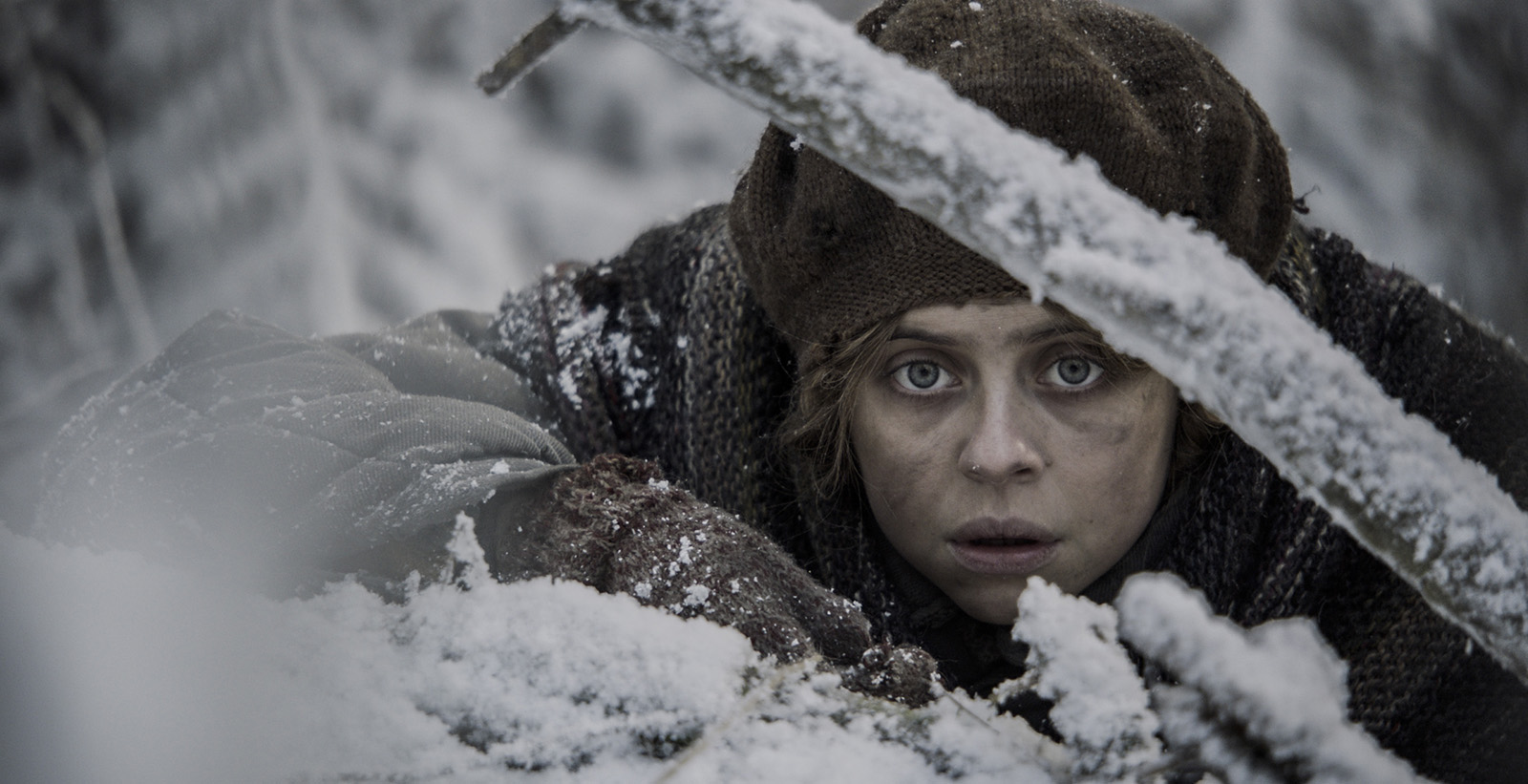Movie review: ‘Ashes in the Snow’ lingers on the surface, failing to evoke sympathy or meaning

(Courtesy of Vertical Entertainment)
"Ashes in the Snow"
Directed by Marius Markevicius
Vertical Entertainment
Jan. 11
By Alyssa Wheeler
Jan. 10, 2019 10:23 p.m.
“Ashes in the Snow” director Marius Markevicius bites off more than he can chew in his underwhelming debut.
Based on the novel “Between Shades of Gray” by Ruta Sepetys, “Ashes in the Snow” follows 16-year-old Lina Vilkas (Bel Powley) and her family after they are exiled to Siberia under Stalin’s rule during World War II. The family, along with several other innocent Lithuanians, are indefinitely put to work in a labor camp. Lina draws the atrocities she witnesses, using art as an outlet to express herself amid the inhumane working conditions and death that surrounds her.
From the very start, Markevicius’ lack of subtlety sets the stage for a rudimentary film. “Ashes in the Snow” opens with title cards providing brief historical background explaining that Lithuania was seized by Stalin’s troops. But just in case you missed the explicit explanation, the establishing shot of Lithuania is conveniently labeled as “Kaunas, Lithuania – 1941” and a large Soviet flag occupies nearly half the frame. The title cards return as the film concludes, reiterating the fact that millions of innocent people were affected by the Soviet regime. The choice to use title cards in such an on-the-nose way immediately called Markevicius’ taste into question. The film might have been far more impactful had the director trusted the audience members and their ability to pick up on these obvious lessons on their own.
Despite the fact that Lina is purported as the film’s central character, the narrative is extremely disjointed and Lina’s journey ultimately becomes more of a B-story, second to her mother, Elena (Lisa Loven Kongsli), rather than the film’s driving force. Even as a main character, her use is questionable; Elena speaks Russian, serving as the sole source of communication between the soldiers and the exiled Lithuanians. While Elena is actively standing her ground against the soldiers, Lina passes the time by drawing pictures and flirting with her handsome yet superficial love interest, Andrius (Jonah Hauer-King). Rather than focusing on a few key characters, the film merely scratches the surface on characters that could be very compelling if given their due diligence. Too much time is spent adding throwaway characters used simply to garner some sort of emotional reaction.
Of these desperate attempts to affect the audience, the most anticlimactic are the several deaths depicted throughout the film. Most of the narrative martyrs seem to be introduced only to be executed a few scenes later. Their stories don’t enhance the film in any way; they are merely vignettes used to ensure the audience knows that the history of Soviet labor camps is tragic – it feels condescending rather than enlightening. These ineffective death scenes are cheap ways to make abundantly clear to the audience that Stalin was not the greatest man in the world – quite the lukewarm take by Markevicius.
Even if the film possessed a more meaningful message, the jarring pace would prove the plot just as unsuccessful. There are long lulls that are suddenly met with overly dramatic culminations with little to no payoff in the long run. In an unintentionally humorous moment of drama, Lina is caught with her illicit drawings. She is brought into the Soviet commander’s office, where he asks Lina to draw his portrait. The following sequence is comically intense, with abrasive music blaring as Lina fiercely sketches the man until she breaks the lead in her pencil. The portrait is then revealed to show the likeness of the commander with black eyes resembling a demon of sorts. What could have been a symbolic integrated element never comes into play again, leaving the purpose of the scene dubious at best.
Such meritless plot devices, including the use of flashbacks, hound the film. The flashbacks were entirely too boring and added nothing but runtime. Markevicius’ unoriginality is evident through the stereotypically filmed soft focus and brightly lit dreamlike sequences. Each flashback is focused on Lina and three of her friends, yet there is no indication as to the importance, if any, of these individuals with respect to the present events. Things that would have been interesting – Lina’s father before he went missing and his relationship with her – were entirely neglected from the jumps in time. If this relationship, among others, was properly explored, perhaps the narrative would be more consequential.
Even though the director’s creative choices are quite questionable, it should be noted that the technical aspects of Markevicius’ directing is indeed competent. There is nothing egregious about shot selection, framing or camera movement. In fact, one standout scene features newly appointed Soviet commander Nikolai (Martin Wallstroem) as he orders one of his men to shoot a woman attempting to escape the labor camp. As the soldier complies, the frame is constructed so that the murder is happening in the background. Nikolai’s profile takes up most of the frame, hiding the horrific act from the audience. This carefully crafted scene was extremely powerful in exposing the violence and complicity of the soldiers without graphic detail – if only the same care was taken in the rest of the film.
And the poor, neglected narrative led to the mess that is “Ashes in the Snow.” Markevicius’ inexperience led the film adaptation to merely be a watered down version of the novel it is based on. If you asked a reader to summarize the plot of the complex novel off the top of their head, it would probably be more coherent than this.


